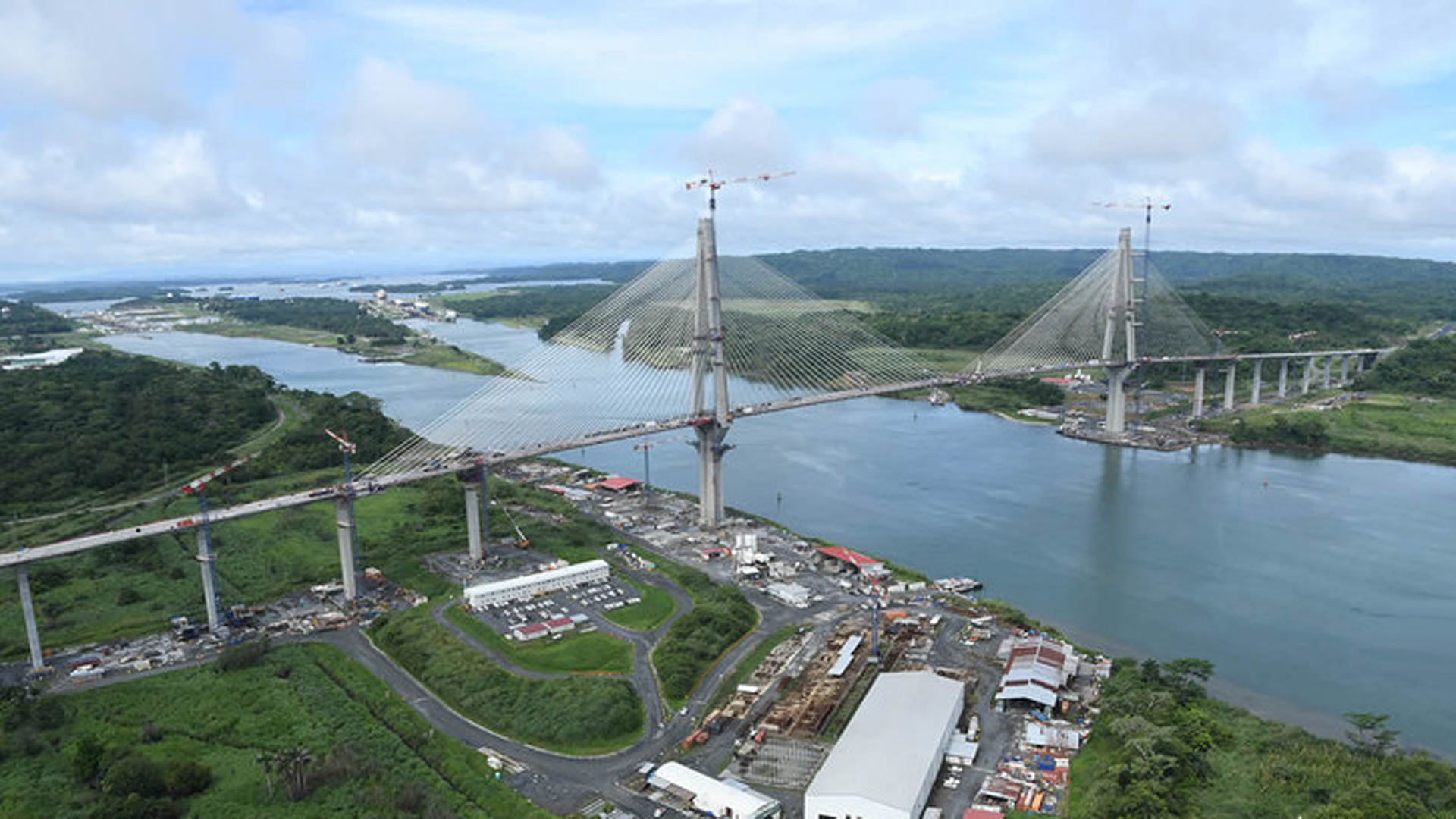
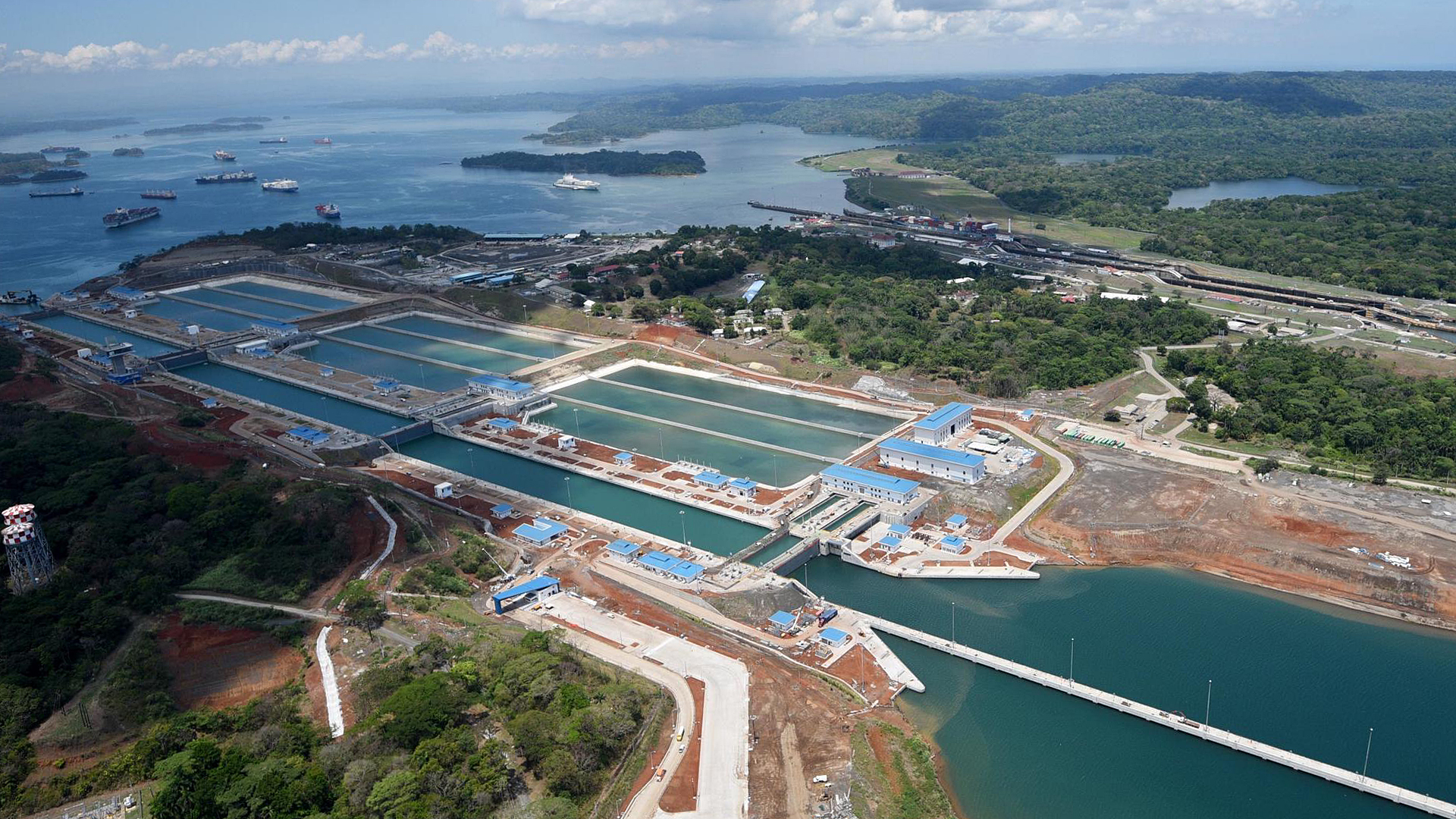
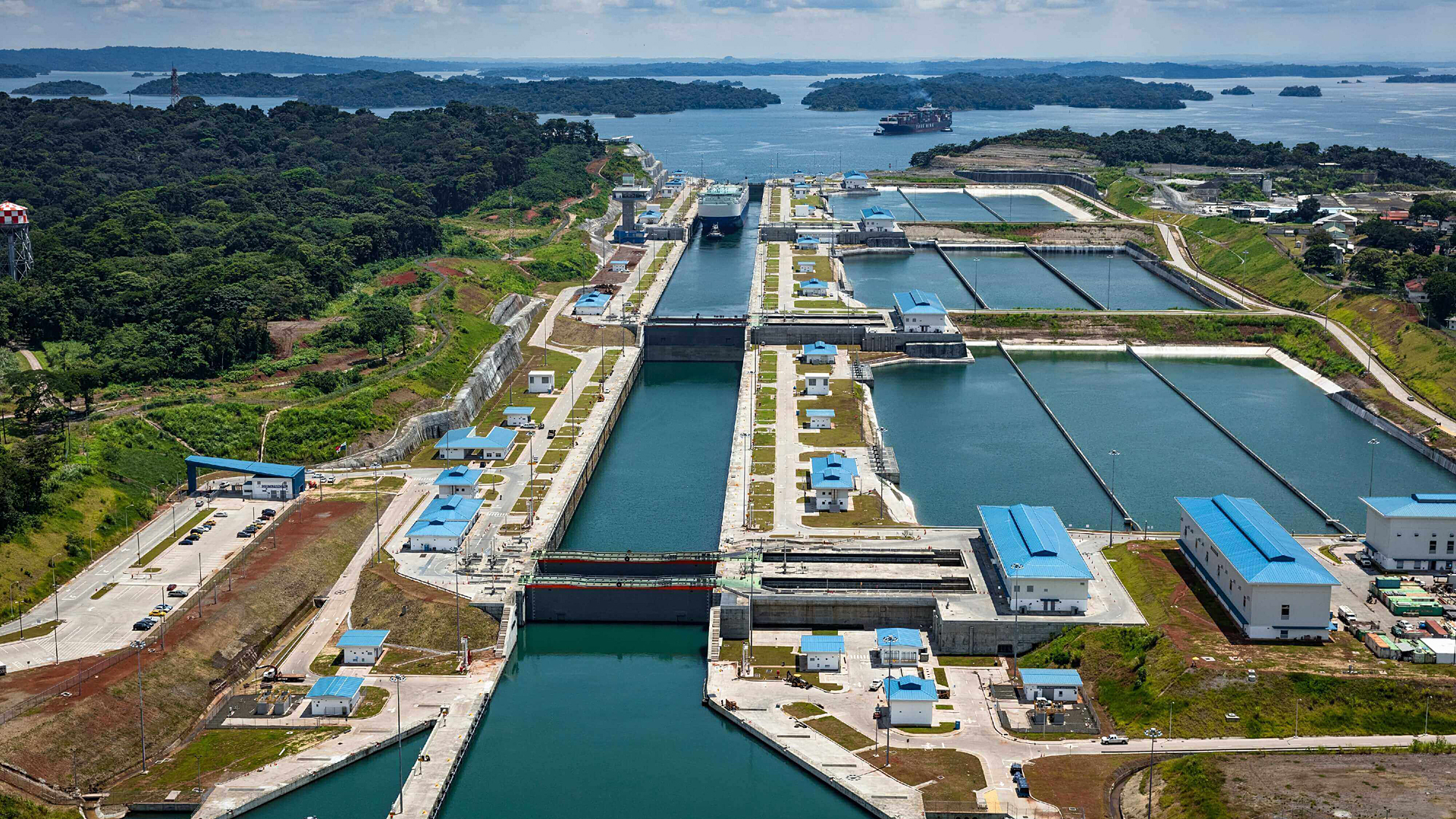
Gatun Lake currently covers about 180 square miles, a vast tropical ecological zone and part of the Atlantic Forest Corridor. Ecotourism on the lake has become an industry for Panamanians.
| The original Panama Canal locks were 110.0 feet wide and 1,050 feet long, with the walls ranging in thickness from 49 feet at the base to 9.8 feet at the top. The central wall between the parallel locks at Gatun is 59 feet thick and over 79 feet high. The steel lock gates measure an average of 6.6 feet thick, 64 feet wide, and 66 feet high. It is the size of the locks, specifically the Pedro Miguel Locks, along with the height of the Bridge of the Americas at Balboa, that determine the size of ships that may use the canal. The 2006 expansion created larger locks, allowing bigger ships to transit through deeper and wider channels. The allowed dimensions of ships using these locks increased by 25 percent in length, 51 percent in beam, and 26 percent in draft. |
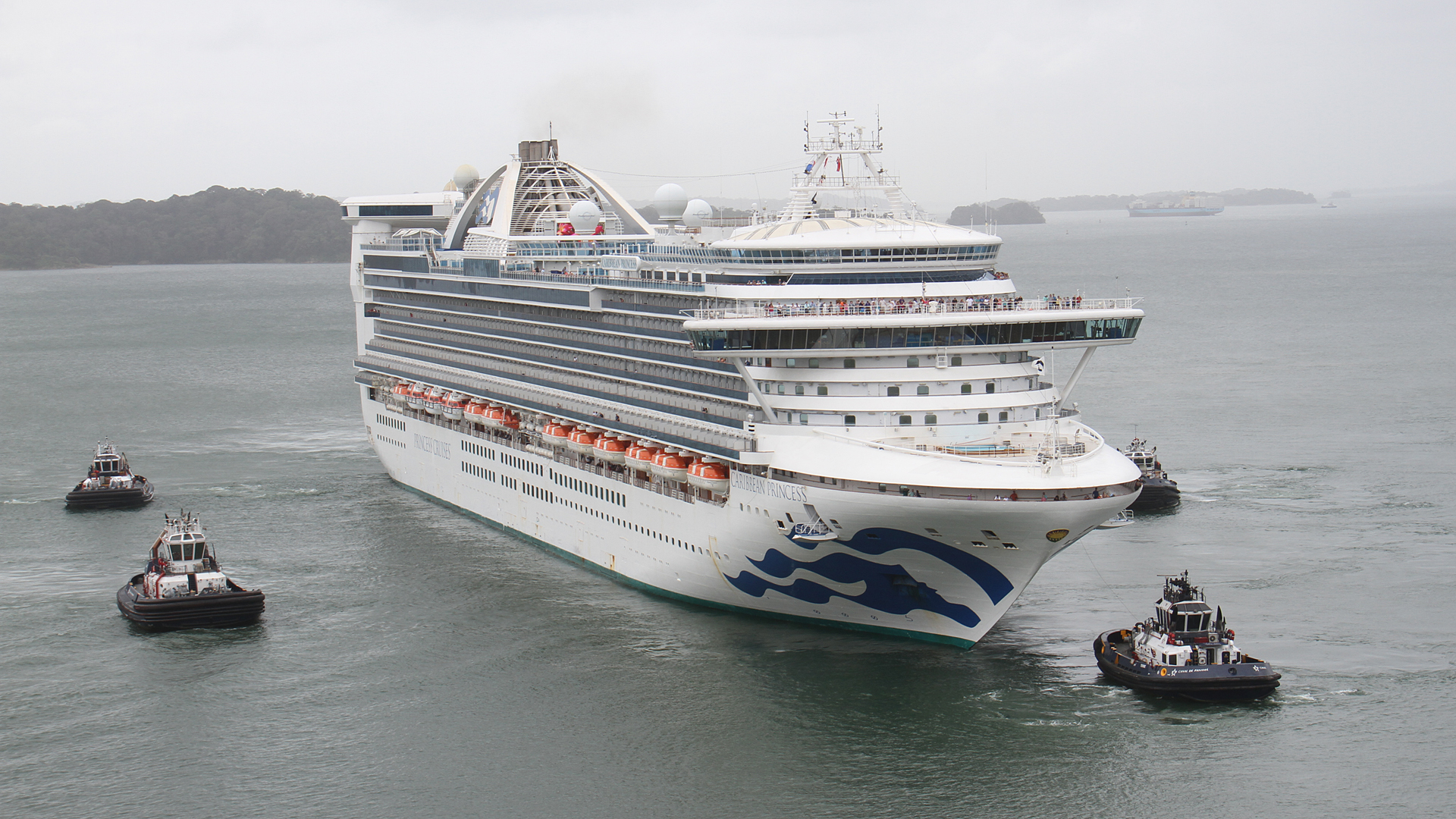 |
 |
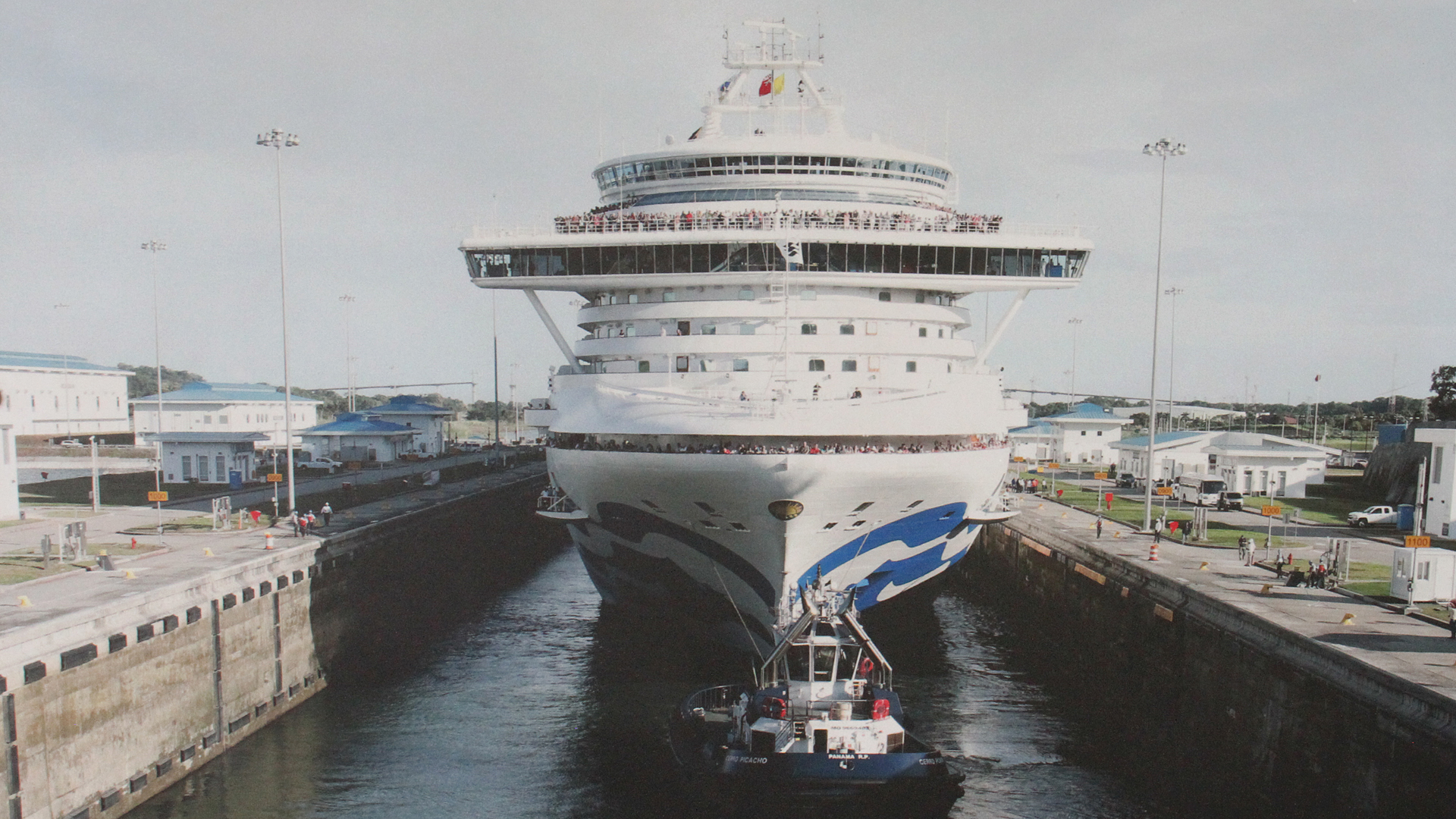 |